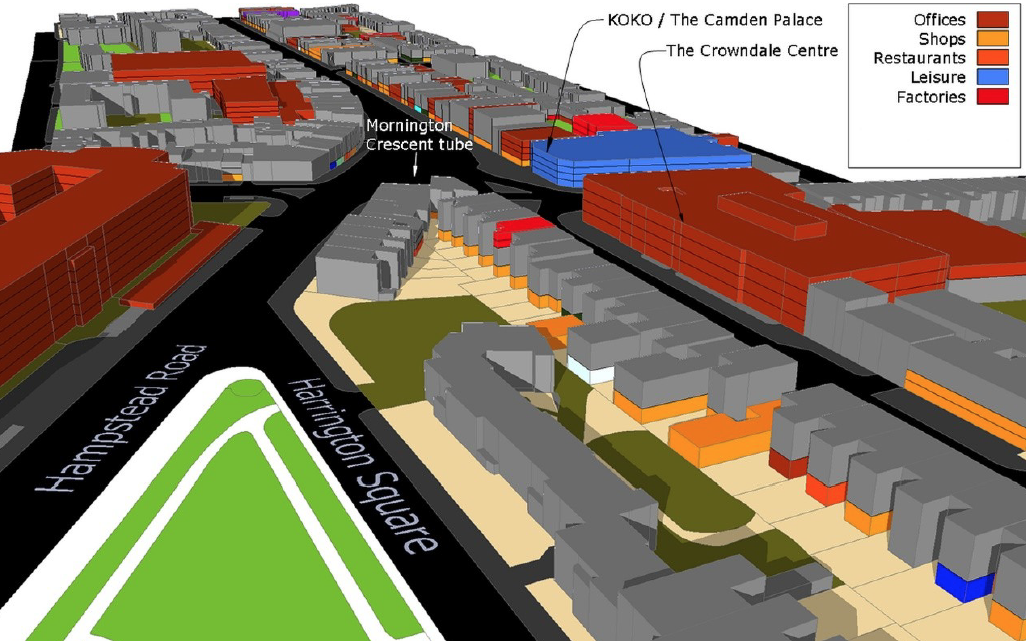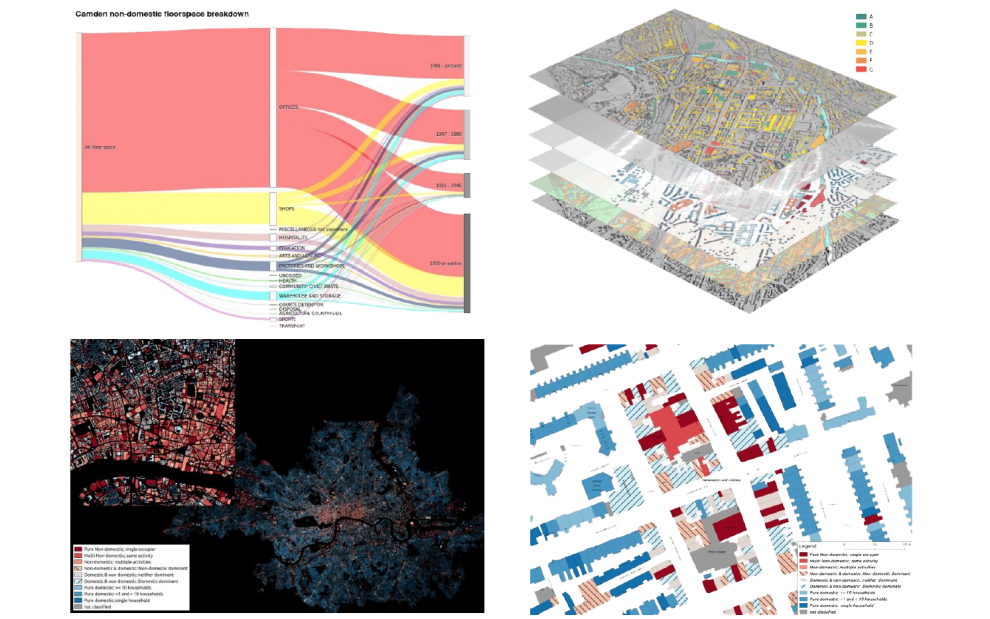3DStock
3DStock is a method for modelling all buildings – domestic, non-domestic and mixed-use – in a locality, in three dimensions and located geographically.

25 May 2018
The primary purpose is the analysis of energy performance, but there are many other potential applications. Models have been built to date of 18 London boroughs and the towns and cities of Leicester, Swindon, Tamworth and Milton Keynes. Data are available for extending the modelling to England and Wales.
- How 3DStock works
The models are assembled automatically from Ordnance Survey digital maps, commercial rating data from the Valuation Office agency (VOA), LiDAR data (laser measurements made by overflying aircraft) from the Environment Agency, and several other sources. Activites are recorded in detail, floor by floor and in many instances down to the room level. Floor areas are given by the VOA data, or are otherwise estimated from the external geometry of buildings. Actual metered energy data are attached at the premises/ building level where these are available, as in Display Energy Certificates; or aggregated to postcodes, LSOs or larger areal units. Energy Performance Certificates are also attached to premises/ buildings. Geometry and activity data can be passed from 3DStock to a second model, SimStock, with which energy performance can be estimated using dynamic simulation, for large populations of buildings.
- Funding
3DStock has been developed by Stephen Evans, Rob Liddiard, Daniel Godoy- Shimizu and Philip Steadman at the Energy Institute in the Bartlett Faculty of the Built Environment, University College London. The work has been funded by a series of grants from the Engineering and Physical Sciences Research Council (EPSRC):
- ‘Building and Energy Data Frameworks’, October 2009 to October 2011,£300,00
- ‘New Empirically-based Models of Energy use in the Building Stock’, April 2011 to October 2012, £434,000
- Centre for Energy Epidemiology, May 2014 to May 2018
- Applications
3DStock has been used to date in a series of consultancies to the Department for Business, Energy and Industrial Strategy (previously the Department of energy and Climate Change):
Evaluation of DECC’s national Building Energy Efficiency Survey Matching addresses of Renewable Heat Initiative, Energy Savings Opportunity Scheme and Salix projects to actual meter data, EPCs and DECs Studies of potential uptake of building-based renewable energy technologies in connection with setting the Fifth Carbon Budget and in two recent and ongoing projects funded by EPSRC: ‘London Urban Sub-Terrain Energy Recovery (LUSTER), to evaluate the potential for recovering waste heat from underground sources to heat buildings ‘High-rise buildings: Energy and Density’, to investigate the relationship between height and energy use in office buildings.
- Publications
- Evans, S, Liddiard, R, and Steadman, P (2014) A 3D Geometrical Model of the Non-Domestic Building Stock of England and Wales; paper presented at the BSO 2014 Building Simulation and Optimisation conference, London, UK
- Godoy-Shimizu D, Steadman P, Hamilton I, Donn M, Evans S, Moreno G, Shayesteh H (submitted 2018) ‘Energy use and height in office buildings’, Building Research and Information
- Evans, S, Liddiard, R and Steadman, P (2016) ‘3DStock: a new kind of three- dimensional model of the building stock of England and Wales, for use in energy analysis’, Environment and Planning B: Planning and Design Evans S, Liddiard R, Steadman P (2017), ‘Modelling a whole building stock: domestic, non-domestic and mixed use’, Building Research and Information

 Close
Close

